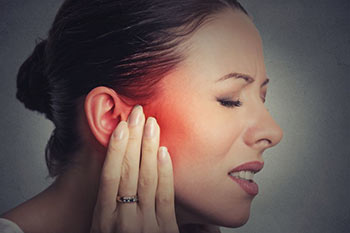January represents the beginning of a new year and it is also recognized as Thyroid Awareness Month by the American Thyroid Association. This provides a great opportunity to reflect on and share some of my recent experiences regarding thyroid health. Dysregulation of the thyroid hormone level can lead to hyperthyroidism (overactive function) or hypothyroidism (underactive function). Another common problem is the development of thyroid nodules (small growths within the substance of the thyroid gland).
One patient presented to my office with severe anxiety, agitation, nervousness, weight loss, and anorexia. She had hyperthyroidism secondary to an autoimmune problem called Graves’ disease. Most autoimmune conditions are managed medically, but some patients require surgical management. Her overactive thyroid could not be controlled with medication, and therefore she elected to have complete removal of her gland (termed total thyroidectomy).
She returned to my office in her words, “level-headed, rested, and sane.” When her thyroid function normalized, she was able to go back to functioning at a normal pace.
One of my favorite patients presented to my office with a golf ball-sized mass in her neck. She was a very nice 11 year-old girl with a thyroid nodule. She had been referred to a specialist and was told to just ignore it, because it was believed to be non-cancerous. However, she was very uncomfortable and they were not satisfied with the plan of action. Imagine feeling a constant lump in your throat every time that you swallow or turn your head. That was her reality.
Another patient reported a similar finding. She was a very nice 78 year-old woman who could no longer read her books before bed at night because her thyroid nodule produced discomfort when she tried to lower her head to read.
Both of these patient underwent surgical removal of the thyroid nodules and had alleviation of the symptoms that they experienced pre-operatively. The little girl is still one of my favorite patients to this day, because when I went to check on her a few hours after surgery, she (with surgical drain, bandage, and all) was doing her homework, citing that she had much to keep up with since she was going to miss some school because of her surgery. She wants to be a doctor (of course I am completely unbiased with respect to my admiration).
Medical treatment is always considered as an option, but surgery is often necessary to alleviate symptoms and remove abnormal tissue. I have been extremely fortunate to train with highly-respected and skilled thyroid surgeons and also continued to advance my own practice when I began working on my own. Due to experience and technology, our complication rates are very low.
One such advance that I am very satisfied with, is the use of continuous neurophysiologic monitoring during surgery. Vocal cord paralysis is probably the most dreaded complication of thyroid surgery, due to potential risks to the function of the larynx. With the use of continuous monitoring, a neurophysiologist monitors my patient’s nerve function throughout the entire procedure and immediately informs us if nerves under excess tension and stretch. We can then adjust our manipulation of the gland, which helps to avoid unnecessary and preventable nerve injuries.
As was state previously, some thyroid problems do not require the need for surgery and can be managed medically. Often times medication can help restore function and prevent weight gain, hair loss, and fatigue, among other symptoms.
How does one know about thyroid disease? Many of our patients are evaluated by a primary care physician and have testing. However, we also see many patients who come in on their own in order to initiate testing and treatment without having seen another doctor. We are available to help in whatever scenario that I patient arrives to our office.
I look forward to another post in the future with updates on Thyroid Cancer Awareness month later this year. If you would like more information on thyroid disease, visit our thyroid page at https://ent-specialist.org/thyroid-disease or the American Thyroid Association at https://www.thyroid.org.




 Benign paroxysmal positional
Benign paroxysmal positional  Swimmer’s ear happens when bacteria grows in the ear canal. The ear canal is a passageway to the eardrum, so this can impact you in many ways. In that canal, there is delicate skin that is protected by a thin coating of earwax. Most of the time, water can run in and out of the ear canal without causing a problem. Usually, you don’t get swimmer’s ear from taking baths or showers.
Swimmer’s ear happens when bacteria grows in the ear canal. The ear canal is a passageway to the eardrum, so this can impact you in many ways. In that canal, there is delicate skin that is protected by a thin coating of earwax. Most of the time, water can run in and out of the ear canal without causing a problem. Usually, you don’t get swimmer’s ear from taking baths or showers. Rhinitis is an inflammation of the nasal membranes. It causes sneezing, nasal congestion and nasal itching in any combination.
Rhinitis is an inflammation of the nasal membranes. It causes sneezing, nasal congestion and nasal itching in any combination.
 Sinus problems
Sinus problems